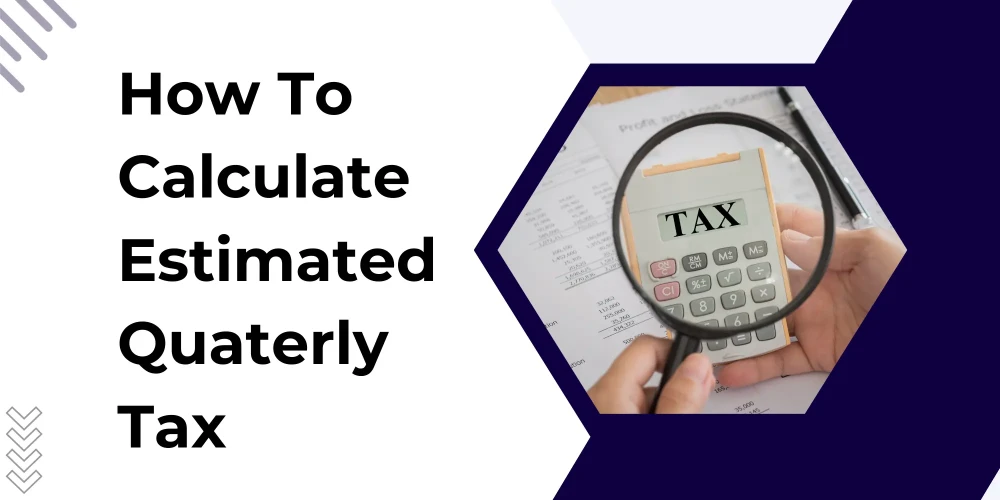Table of Contents
The Child Tax Credit allows the parents to claim a $2000 credit for each qualifying child. Moreover, it also allows you to claim $500 for other dependents. However, the credit phases out for taxpayers with a modified adjusted gross income (MAGI) exceeding $200,000 ($400,000 for married filing jointly).
Who can qualify as a qualifying Child?
To qualify as a dependent child for the CTC, the individual must meet certain guidelines:
- Relationship: Be the taxpayer’s child (including a stepchild, adopted child, or foster child) or sibling (brother, sister, stepbrother, or stepsister), or a descendant of the taxpayer's child or sibling.
- Age: The age should be under 17 at the end of the tax year.
- Citizenship/Residency: The individual should be a U.S. citizen, either citizen or resident.
- Support: The individual should not provide over half of his/her support for the tax year.
- Residence: The individual must live with the taxpayer for more than half of the tax year.
- Filing Status: The individual should not file a joint return for the tax year other than to claim any type of refund.
- Dependent Claim: Last but not least, the individual must be claimed as the taxpayer’s dependent.
- Age Calculation Note: It is very important to note that the individual should attain an age on the anniversary of their birth. For example, a child born on January 15, 2006, must attain the age of 17 on January 15, 2023.
Determining “Other Dependants”
Moving beyond qualifying children, the Other Dependent Credit (ODC), often referred to as the partial child tax credit, comes into play for dependents who don't meet the criteria of a qualifying child. There are two types of ‘Other Dependants”
- Qualifying Child Over 17: A qualifying child who is 17 years old or at least 18 years old for the tax filing year.
- Qualifying Relative: A qualifying relative is also a citizen, national, or resident, of the US. More details on this are discussed below.
Who is a Qualifying Relative Dependent?
Now let's understand the criteria for a Qualifying Relative Dependent. Now, for an individual to claim an individual as a qualifying relative on their tax return, they need to meet certain guidelines set up by the authorities. They are
- Relationship/Household: A qualifying relative must be a member of the taxpayer’s family or household.
- Gross Income: The gross income of a qualifying relative must be below the annual exemption amount.
- Support: The taxpayer must also provide at least half of the qualifying relative’s support.
- Not Qualifying Child: Importantly, a qualifying relative must not qualify as another taxpayer’s qualifying child.
Furthermore, unlike a qualifying child, there’s no age limit for a qualifying relative, making this category more flexible when it comes to age eligibility. These criteria aim to establish a crystal clear blueprint for identifying and claiming qualifying relative dependents on your tax return.
Understanding Qualified Relatives in the Context of Taxation:
As we navigate the complexities of tax-related considerations, recognizing who qualifies as a relative becomes very important. A Qualified Relative, for tax purposes, includes a range of relationships:
- Child or Descendant: This encompasses not only the Payer’s child but also their grandchildren or any descendant of their child.
- Siblings and Step-Siblings: This also includes brothers, sisters, step-brothers, step-sisters, half-brothers, or even half-sisters of the taxpayer.
- Parents and Grandparents: The taxpayer’s father, mother, grandparent, or any direct ancestor is considered, excluding foster parents.
- Step-Parents: This also includes step-father and step-mother but it doesn't count them as a direct ancestor.
- Extended Family: Extended family also falls in this category which includes aunts, uncles, nieces, and nephews. Moreover, brothers and sisters of the taxpayer’s parent any son or daughter of the payer’s brother or sister are also included.
- In-Laws: Relationships created after marriage are also included like father-in-law, mother-in-law, son-in-law, daughter-in-law, etc.
Connecting the Dots:
In the broader context of our comprehensive guide on navigating medical expense deductions for tax seasons, understanding these relationships is crucial. Whether you are assessing eligibility for the Child Tax Credit or determining who qualifies as a dependent for medical expenses, recognizing these relatives helps to ensure accurate tax fillings. Furthermore, it is important to note that for Other Dependent Credit(ODC), only U.S. citizens, nationals, and residents are eligible. Foreigners, even if citizens or residents of Canada and Mexico or adopted by U.S. citizens or residents, do not qualify for ODC unless the adopted child is a U.S. citizen or national and lived with the taxpayer throughout the year. This overall knowledge revolving around taxes ensures compliance and optimal utilization of tax benefits.
Unlocking the Additional Child Tax Credit
The Child Tax Credit is a nonrefundable personal credit, typically which is consumed against the taxpayer’s total regular tax liability. This credit is subject to reductions by the allowable foreign tax credit and the alternative minimum tax (AMT) liability. However, a significant facet of the Child Tax Credit is the refundable portion known as the Additional Child Tax Credit.
Maximizing the ATC:
- $1,700 for tax years beginning in 2024.
- $1,600 for tax years beginning in 2023.
- $1,500 for tax years beginning in 2022.
- $1,400 for tax years beginning in 2020.
Navigating Limitations - One or Two Qualifying Children
For Taxpayers with fewer than three qualifying children, the ACTC faces certain limitations. It is restricted to the lesser of the balance of the child tax credit amount based on the number of qualifying children or 15% of the amount by which the taxpayer’s earned income aligns with computations for the earned income credit.
Three or More Qualifying Children
For taxpayers with three or more qualifying children, the ACTC calculation introduces an additional layer. It is limited to the lesser of the balance of the child tax credit amount or the greater of the excess of Social Security taxes over the Earned Income credit allowed to the taxpayer or 15% of the taxpayer’s earned income more than $2,500.
Crucial Note on Calculations:
The ACTC’s computation unfolds on Schedule 8812 (Form 1040), designated for Credits for Qualifying Children and Other Dependents.
Credit for Dependent Care Expenses
You can always make the tax considerations easier when you explore the world of Child and Dependent Care Expenses. Let’s embark on a journey to understand this realm, breaking down the key aspects for easy and accessible comprehension.
Individual taxpayers can claim a non-refundable for a portion of qualifying dependent care expenses paid during the tax year. This credit aims to support the taxpayer or at least one spouse on a joint return to be gainfully employed. To qualify, the taxpayer must have one or more qualifying dependents residing with them for over half of the year. A qualifying individual can be:
- dependent of the taxpayer who is a qualifying child under the age of 13;
- A dependent of the taxpayer who is physically or mentally incapable of caring for himself or herself; or
- The taxpayer's spouse who is physically or mentally incapable of caring for himself or herself.
Credit Amount
A Child and Dependent Care Credit is a valuable resource for those grappling with the costs of caring for dependents while working. Here’s a breakdown of how to calculate this credit:
- The credit is usually calculated by multiplying the taxpayer’s employment-related by an applicable percentage based on their Adjusted Gross Income(AGI).
- The AGI is up to $15,000, the credit is a general 35% of employment-related expenses.
- The credit percentage diminishes at one point for each $2,000 of AGI, or a fraction thereof, from $15,000 to $43,000.
- If AGI is more than $43,000, then the credit percentage remains at a solid 20%.
Filing and Identification Requirements:
When it comes to filing and claiming this credit, certain crucial details and conditions must be considered:
- Form 2441 is the battleground for calculating the Child and Dependent Care Credit, and it's claimed on Form 1040.
- Each qualifying individual's taxpayer identification number or Social Security number (SSN) must be provided on Form 2441.
- Adopting parents awaiting their child's SSN can apply for an Adoption Taxpayer Identification Number (ATIN) to fulfill this requirement.
- Additionally, the form demands the inclusion of the care provider's name, address, and taxpayer identification number.
Claiming the Credit:
To claim the Child and Dependent Care Credit, specific conditions related to marital status and household arrangements should be taken care of:
- Married individuals generally must file a joint return to claim the credit.
- Exceptions exist for legally separated spouses under a divorce or separate maintenance decree.
- A married person can be considered unmarried if, for the last six months of the year, they live apart from their spouse, file a separate return, and pay over half the cost of maintaining a household for more than half the year.
Annual Limit Expense:
Understanding the cap on the amount of employment-related expenses considered for the credit is important:
- The maximum considered is $3,000 for taxpayers with one qualifying individual.
- For those with two or more qualifying individuals, the limit extends to $6,000.
Unlocking the Maze of Qualified Expenses for the Child and Dependent Care Credit:
It is very crucial to understand what exactly qualifies for the Child and Dependent Care Credit when it comes to handling valuable tax relief. Let’s understand it better.
Definition of Employment-Related Expenses:
- Qualified expenses must be employment-related, meaning they are incurred for household services and the care of a qualifying individual.
- The primary purpose of these expenses should be to enable the taxpayer (or at least one spouse on a joint return) to be gainfully employed or actively searching for gainful employment.
Allocation of Expenses:
If an expense is partially work-related and partially not, the taxpayer must make a reasonable allocation. Only the portion directly attributable to the care of the qualifying individual or household services is considered for the credit.
Exclusions and Limitations:
- A parent cannot claim the Child and Dependent Care Credit for amounts paid by an ex-spouse.
- Similarly, amounts reimbursed by a state Department of Social Services are not eligible for the credit.
Timing of Credit Allowance:
- The credit is allowable in the tax year when the services are provided or the expenses are paid, whichever is later. This holds regardless of the taxpayer's accounting method.
- If an expense is paid in the last month of a tax year but the services extend into the following tax year, the credit is not allowed until the following year.
Nature of Employment-Related Expenses:
- Expenses must be for the care of a qualifying individual to be eligible for the credit.
- Not all services provided for a qualifying individual are automatically considered as care expenses. Only those expenses primarily intended to assure the individual's well-being and protection qualify.
- Expenses for food, clothing, or education are generally not considered for the care of a qualifying individual unless they are inseparable from the overall cost of caring for the individual.
Daily Basis Rule:
- Expenses incurred after the qualifying individual ceases to be eligible during the year are not considered employment-related. This is applied daily.
- For instance, if a dependent child turns 13 during the year, expenses incurred before the birthday qualify, while those incurred afterward do not.
Out-of-Home Care and Dependent Care Centers:
- Employment-related expenses for out-of-home care qualify if they are for a qualified child under age 13, or a qualified spouse or dependent spending at least eight hours a day in the taxpayer's home.
- If out-of-home services are provided by a dependent care center, certain criteria must be met, including providing care for more than six persons, receiving compensation for services, and compliance with state and local regulations.
Payments to Dependents and Relatives:
- The Child and Dependent Care Credit is not allowed for any employment-related expense incurred for dependents or relatives residing in the taxpayer's home.
- Understanding these nuances empowers taxpayers to navigate the landscape of qualified expenses effectively, ensuring they receive the maximum benefit from the Child and Dependent Care Credit.
NSKT Global stands as your trusted partner in simplifying the complexities of tax filing. With cutting-edge technology, a team of seasoned professionals, and a commitment to client satisfaction, NSKT Global empowers individuals and businesses alike to navigate the intricate landscape of tax compliance with ease. By choosing NSKT Global, you not only gain a reliable ally in meeting your tax obligations but also unlock a world of efficiency and accuracy. Let NSKT Global be the catalyst for your financial success, ensuring a seamless and stress-free tax filing experience.
The information provided here is for general informational purposes only and should not be construed as professional advice. The tax-related content on this blog is based on our understanding of tax laws as of the date of publication and may be subject to change.







